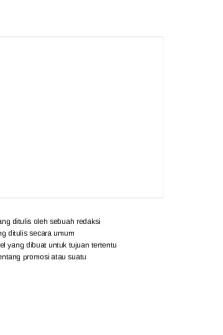MCED Power Point notes PDF

| Title | MCED Power Point notes |
|---|---|
| Author | Alexandra DE Klerk |
| Course | Multicultural Education |
| Institution | Varsity College |
| Pages | 13 |
| File Size | 247.2 KB |
| File Type | |
| Total Downloads | 19 |
| Total Views | 134 |
Summary
Multicultural education power point notes, third year. Varsity college...
Description
Multicultural Education THEME 1 - MCED World became heterogenous – variety of social, economic and political developments Education policy makers faced with challenge – how to deal with the inclusion of learners from different races and ethnic backgrounds – speak different languages Took form of assimilationist policies Assimilation – an approach – places emphasis on minimising cultural differences and encouraging social conformity and continuity
Minority groups – expected to become assimilated into mainstream dominant group – adopt lang, cultural modes/values of this group Education – little recognition given to needs from diverse cultural backgrounds Multiculturism – emerged – 1960’s – reaction to assimilation Recognises and accepts – rightful existence of different cultural groups
Views cultural diversity as an asset and source of social enrichment instead of handicap In US response to MCED – development of “ethnic study courses’ – chosen by learners on whom course was based Found to be insufficient and unlikely to bring about equal education opportunities Felt that a more comprehensive approach was needed – that addressed not only racial and cultural inequalities but also socio-economic and gender-based ones MCED gained more favour – must be adapted to fit needs of the country
Features and Goals of MCED •
MCED – not a single course/programme – multiple programmes and practices
•
Has different meanings for different schools/groups of people – based on needs/circumstances
•
Pg 4 – PB & Handout number 3 – illustrate the features of MCED using a mindmap – use coggle or any other online app
•
Ultimately – goals of MCED – reduce the achievement gaps of learners in diverse classrooms
•
Increase retention of learners belonging to diverse racial and socioeconomic groups
•
Greater educational opportunity
•
A more socially just community
•
Typologies
Typologies of multicultural education serve a similar purpose. In addition, they are useful as they define in clear and concrete ways particular goals and ideologies about multicultural education. Where different approaches to multicultural education are found between and even within one typology, it is important to remember that different typologies of, or approaches to, multicultural education are not necessarily incompatible or exclusive. In other words, different approaches to multicultural education can and do coexist within a single institution.
Margaret Gibson One of the first typologies of multicultural education to be developed was that of Margaret Gibson (1976). According to her, there are five approaches to multicultural education: Education of the culturally different (or benevolent multiculturalism) which seeks to incorporate culturally different learners more effectively into mainstream culture and society. Education about cultural differences (or cultural understanding), which teaches learners about cultural differences in an effort to promote better cross-cultural understanding. Education for cultural pluralism, which seeks to preserve ethnic cultures and increase the power of ethnic minority groups. Bicultural education, which seeks to prepare learners to operate successfully in two different cultures. Multicultural education, which Gibson (1976: 15) describes as “the normal human experience” as it teaches learners to function in multiple cultural contexts, ethnic or otherwise.
James Banks The typology evolved over a period of a few decades and is clearly set out in later publications (Banks 2006; Banks & Banks 2010). Banks’ typology includes the following: •
The contributions approach in which ethnic content is limited primarily to special days, weeks or months related to ethnic events and celebrations (the “heroes and holidays” approach)
• The ethnic additive approach in which teachers add content, concepts, themes and perspectives to the basic curriculum, but without changing the basic structure, purposes and characteristics of the curriculum • The transformational approach, which changes the basic assumptions of the curriculum and enables learners to view concepts, issues, themes and problems from several ethnic perspectives and points of view. This approach is not an “addon”
approach, but an infusion of different perspectives with the purpose of extending the learners’ understanding of the complexity of the society in which they live. • The decision-making and social action approach, which requires learners to make decisions and take action related to the concept, issue or problem they have studied in the unit.
Christine Sleeter and Carl Grant They constructed their typology of approaches to multicultural education in an attempt to clarify what people actually mean when they talk about or say they “do” multicultural education. Their typology recognizes five approaches: • Teaching the exceptional and culturally different, which focuses on adapting instruction to learner differences for the purpose of helping such learners succeed • The human relations approach, which focuses on love, respect and more effective communication in order to bring people who differ closer together • Single group studies, developed as an overarching term for ethnic studies, women studies and later, gay and lesbian issues • The multicultural education approach which links race, language, culture, gender, disability and, to a lesser extent, social class, and which works towards making the entire school celebrate human diversity and equal opportunity • Multicultural social justice education, which extends the multicultural education approach into the realm of social action, focusing on challenging social stratification as well as on celebrating human diversity and equal opportunity
Angelina Castagno’s Based on the goals of different approaches to multicultural education, Castagno (2009) developed a framework which synthesises the different approaches to multicultural education into six categories: 1. Educating for assimilation, which aims to assimilate learners into the mainstream culture of the school 2. Educating for amalgamation, which emphasises commonalities across groups in an effort to reduce prejudice 3. Educating for pluralism, where the main purpose is to maintain various group identities and group membership 4. Educating for cross-cultural competence, which aims to ensure that learners acquire the knowledge and skills necessary to function in their own and other cultures 5. Educating for critical awareness, which aims at giving the learner an improved understanding of power, privilege and oppression within and between groups
6. Educating for social action, which requires that learners act to affect social change. This is seen as important as it is felt that critical awareness is not actually enough to make a difference in the material realities of people’s lives.
•
Multicultural education is a multidimensional educational approach which accords equal recognition to all cultural groups and which provides all learners with a meaningful and relevant educational experience.
•
However, this chapter clearly illustrates that multicultural education is still a contested field where different understanding, definitions and approaches may be found.
•
It also shows that different approaches to integration can be found in different schools, but also within the same institution.
Approaches to diversity •
PB pg 9 – 11
•
3 phases of integration:
•
First phase: education provided in schools run by religious institutions during apartheid era
•
Second phase: took place within the public – school sector in late 1980’s – schools classified according to race
•
Third phase: after 1994 – on non – racial education system
•
Refer to handout – number 5 – complete
Handout – complete numbers 6 & 7 Handout 2 – complete Theme 1 – 1, 2, 3 – LO3 & LO3 Read chap 2 pp 19 – 25 – PB for Theme 2 Read chap 2 pp 25 – 32 – PB for Theme 3 Research for assig 1
THEME 2 – THE MEANING OF CULTURE •
Culture – complex human phenomenon
•
Often associated with material goods and artefacts
•
Or with obvious visual aspects – food and dress
•
Also often defined in terms of a group’s art, music, literature
•
Term “culture” – also used in the place of “society”
•
So when we refer to “African culture”- really referring to African society and its culture
•
However – culture – far more complex – as can be seen by various definitions from various perspectives
•
Refer to these definitions – pg 20
Term culture will not be confined to one definition It will be seen as a composite of significant and interrelated factors – all of which have significance for teaching and learning Illustrate these various definitions in a mind map for your own understanding – pg 20 – 21 From these definitions – obvious that culture has many faces Some highly visible – explicit Others hidden from view – implicit Important to remember – the culture embraced by a particular population is dynamic – subject to change by internal and external factors BUT cultural adaptation and change do not take place abruptly but are passed from one generation to next Groups try to maintain/preserves as many aspects of their culture as possible
MACROCULTURE AND MICRO OR SUBCULTURE – PB pg 22 – 23 •
MACROCULTURE
•
Embodied by a countries overarching symbols
•
Eg – flag, national anthem
•
Values
•
Eg – justice, equality, human dignity
•
These are shared to some degree by all citizens
•
COMPLETE HANDOUT NO. 6
•
MICRO/SUBCULTURE
•
Smaller groups – eg – religious groups, language groups, sports groups, classroom, office
•
Members in microcultures share a belief in certain rules, roles, values and behaviours
•
Different microcultural groups – within the nation – perceive, interpret, experience national values and ideals differently
EG. OF MICROCULTURES THAT CAN INFLUENCE CLASSROOM TEACHING •
PB PG 22 – 23
•
HANDOUT NO.7
•
GENDER:
•
Describes masculinity and femininity
•
The thought, feelings, behaviour and
•
Physical factors that identify people as male or female
•
Although there are similarities – teachers must recognise differences – should plan gender-appropriate educational experiences
BARRIERS TO LEARNING: •
•
•
Learners with disabilities – include in mainstream education since 2001
All learners – irrespective of ability – follow the national curriculum – needs to be adapted to suit abilities
SOCIO – ECONOMIC CLASS: •
Plays a significant factor in determining how a person acts, thinks, lives, relates to others
•
Teachers from middle/upper class background – difficultly understanding social and economic problems facing learners from lower socio – economic homes
•
LANGUAGE:+ •
Schools have a linguistically diverse learner population
•
Learners speak different home languages
•
Have different levels of competence on the language of teaching and learning
•
Learner and teacher population may be multilingual – for historical reasons – majority of schools have only one language of learning - in many not the first language of learners
FAMILY STRUCTURE:p •
Learners may come from nuclear family or an extended family
•
Teacher used to nuclear family structure may be concerned about consistency of an extended family – where may be many caregivers
•
Teacher used to extended family – may view nuclear family with an au pair – as inappropriate
•
Other kind of family structures – single families, adult partners living together, gay/lesbian parents
•
Handout 2 – Theme 2 – LO6
WORK ON THE FOLLOWING FOR ASSIGNMENT: Why have you chosen the selected culture (5) Describe your own cultural context (5) Tabulate the explicit and implicit aspects of your culture and chosen culture Elaborate on, analyse and compare the macro and micro cultures of each culture – tabulate
THEME 3 – EDUCATION & CULTURE CULTURAL FACTORS INFLUENCING THE TEACHING AND LEARNING PROCESS •
Variety of cultures – in one classroom – implications for teaching and learning process
•
Educationists – some believe culture should not be taken into consideration
•
Others – believe – cannot ignore – existence of diverse cultural factors
•
Maintain that such factors do influence teaching and learning
Failure to consider cultural factors can lead to: •
Cultural isolation
•
Cultural erosion
•
Learning problems
•
Behavioural problems
•
Conflict arising from misunderstandings caused by breakdown in communication
•
Teachers need to be knowledgeable about various cultural factors which might influence – way they teach and way learners learn and behave in class
•
Non – verbal communication – determined by culture – can have a profound effect on communication and thus understanding between teacher and learner
•
Learning preference –way in which individual learns – closely associated with culture – not all learners – learn same way
•
Teachers – need – plan – teaching – accommodate different learning styles
•
Social values – values – beliefs/ideals about how we should/should not behave
•
Acquired from social system and culture in which – grew up
Core values – those ideals which are general and commonly held by all Values – differ from one culture to the next When – not understood by others – conflict arises – detrimental effect on teaching and learning World view – way in which a cultural group perceives people and events People who share similar beliefs, social values, experiences – most likely – view reality in same way Inclined – develop similar ways of leaning, conceiving, recognising, interpreting, reasoning Different world views – lead to conflict, misunderstanding Different world views – also in classroom Often teacher – fails – consider world view of other individuals and groups – because dominant one taken for granted Assumed that everyone views reality in same way Handout 2 – Theme 3 – LO7
CONFLICT IN MULTICULTURAL CLASSROOM – KEY CONCEPTS •
Read pg 29 – list the points that a teacher should consider when handling conflict
•
KEY CONCEPTS:
•
PB – PG 31
•
RACISM:
•
Belief that one’s own race – superior to another
•
Based on the false premise that physical features of a racial group determine intellectual characteristics awa social behaviour
•
Many societies – racism became institutionalised by way of established laws and practices
•
Cultural racism – belief that customs, art, music, literature, economics, language, traditions, religious beliefs of minority groups – inferior to those of dominant culture
STEREOTYPES: •
Happens when mental categories – created in order to place people, items, events in conceptually specified groups
•
Formed as a result of – overload of information and experience we have
•
To keep us from being cognitively overwhelmed – brain developed – mechanism of stereotyping – creating categories – conveniently place large amounts of info – to organise and simplify the world
•
Stereotypes sometimes amount to a rigid and over - generalised description of a person/group
•
When attached to racial, cultural, national group – often the implication – that the characteristics are generally determined and so cannot be changed
•
Influences people’s perceptions of and behaviour towards groups other than their own
PREJUDICE: Defined as a judgement or opinion or in favour of a person or thing formed beforehand Stereotyping – how we describe people Prejudice – how we feel about people
XENOPHOBIA: Defined as hatred, fear of foreigners Denote – dislike of foreigners Characterised by negative attitude towards foreigners
In SA – not just above – but a violent practice that results in bodily harm and damage Specific target – not all foreigners victimised Read: chap 2 – pp 32 -33 National guidelines on school uniform Language in schools Religion and culture Sexual orientation and gender identity in schools
THEME 4 – RACIAL & CULTURAL PREJUDICE RACIAL AND CULTURAL PREJUDICE IN CHILDREN •
Common misconception – that young children – unaware of cultural and racial prejudice
•
Are therefore not conscious of prejudice and stereotypes
•
Research shows that they are aware – as early as age two and half
•
Age 3 or 4 – have basic concept of race – able to apply labels BLACK/WHITE – to pictures, dolls, photographs
•
Contrary to what teachers believe – children very much aware of racial differences/categories
•
Have developed different attitudes towards different racial/cultural groups – by time enter school
SOURCES OF PREJUDICE Having negative racial attitudes by children – unavoidable – absorb prejudices of those around them Acquired from parents, school, classmates, siblings, media
WE TREAT THEM ALL THE SAME •
Teachers asked about teaching children of different colour – respond – do not notice colour – treat all children the same
•
However – to ignore race or culture – is to deny the child’s cultural identity and heritage
•
Often adopt a colour - blind approach to school integration
•
Success of school integration – measured by the degree of assimilation – “they are so well integrated we do not notice them”
REDUCING RACISM AND PREJUDICE •
PB pg 33
•
Assign leadership, responsibility and tasks equitably
•
Eliminate segregated social and play areas
•
Avoid grouping on the basis of gender/race
•
Encourage boys and girls to participate in non – traditional activities
•
Entertain the same expectations wrt learning and behaviour for both boys and girls
•
Introduce interesting topics on race relations and gender – related issues for discussion
•
Develop appropriate curricula
•
Develop rules and code of conduct for learners
•
Handout 2 – Theme 4 – LO 10
Similar Free PDFs

MCED Power Point notes
- 13 Pages

Nervous System Power Point Notes
- 8 Pages

Power Point Outline
- 1 Pages

Power Point tanya - MEDICINA
- 6 Pages

power point Ascaris lumbricoides
- 19 Pages
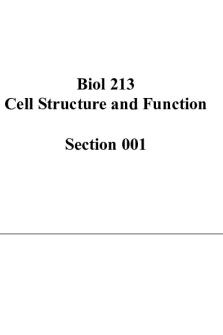
Power point chapter 1
- 71 Pages

Power Point 1 Introduction
- 1 Pages
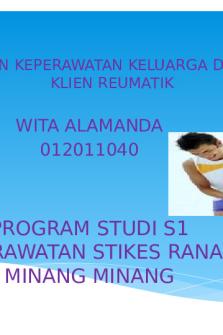
Power point rematik wita
- 7 Pages
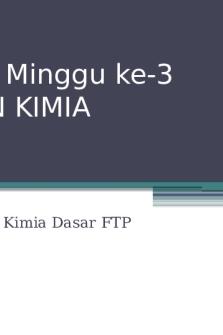
POWER POINT IKATAN KIMIA
- 27 Pages

MODUL MICROSOFT POWER POINT
- 14 Pages

Power point BULLYING
- 7 Pages

Prácticas Power Point
- 2 Pages

Microsoft Power Point E3
- 9 Pages
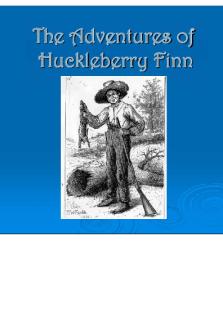
Huckleberry Finn Power Point
- 22 Pages
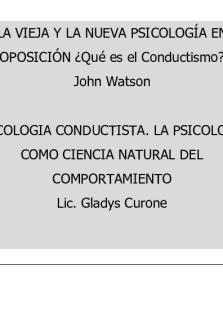
Conductismo. Power Point
- 15 Pages
Popular Institutions
- Tinajero National High School - Annex
- Politeknik Caltex Riau
- Yokohama City University
- SGT University
- University of Al-Qadisiyah
- Divine Word College of Vigan
- Techniek College Rotterdam
- Universidade de Santiago
- Universiti Teknologi MARA Cawangan Johor Kampus Pasir Gudang
- Poltekkes Kemenkes Yogyakarta
- Baguio City National High School
- Colegio san marcos
- preparatoria uno
- Centro de Bachillerato Tecnológico Industrial y de Servicios No. 107
- Dalian Maritime University
- Quang Trung Secondary School
- Colegio Tecnológico en Informática
- Corporación Regional de Educación Superior
- Grupo CEDVA
- Dar Al Uloom University
- Centro de Estudios Preuniversitarios de la Universidad Nacional de Ingeniería
- 上智大学
- Aakash International School, Nuna Majara
- San Felipe Neri Catholic School
- Kang Chiao International School - New Taipei City
- Misamis Occidental National High School
- Institución Educativa Escuela Normal Juan Ladrilleros
- Kolehiyo ng Pantukan
- Batanes State College
- Instituto Continental
- Sekolah Menengah Kejuruan Kesehatan Kaltara (Tarakan)
- Colegio de La Inmaculada Concepcion - Cebu
